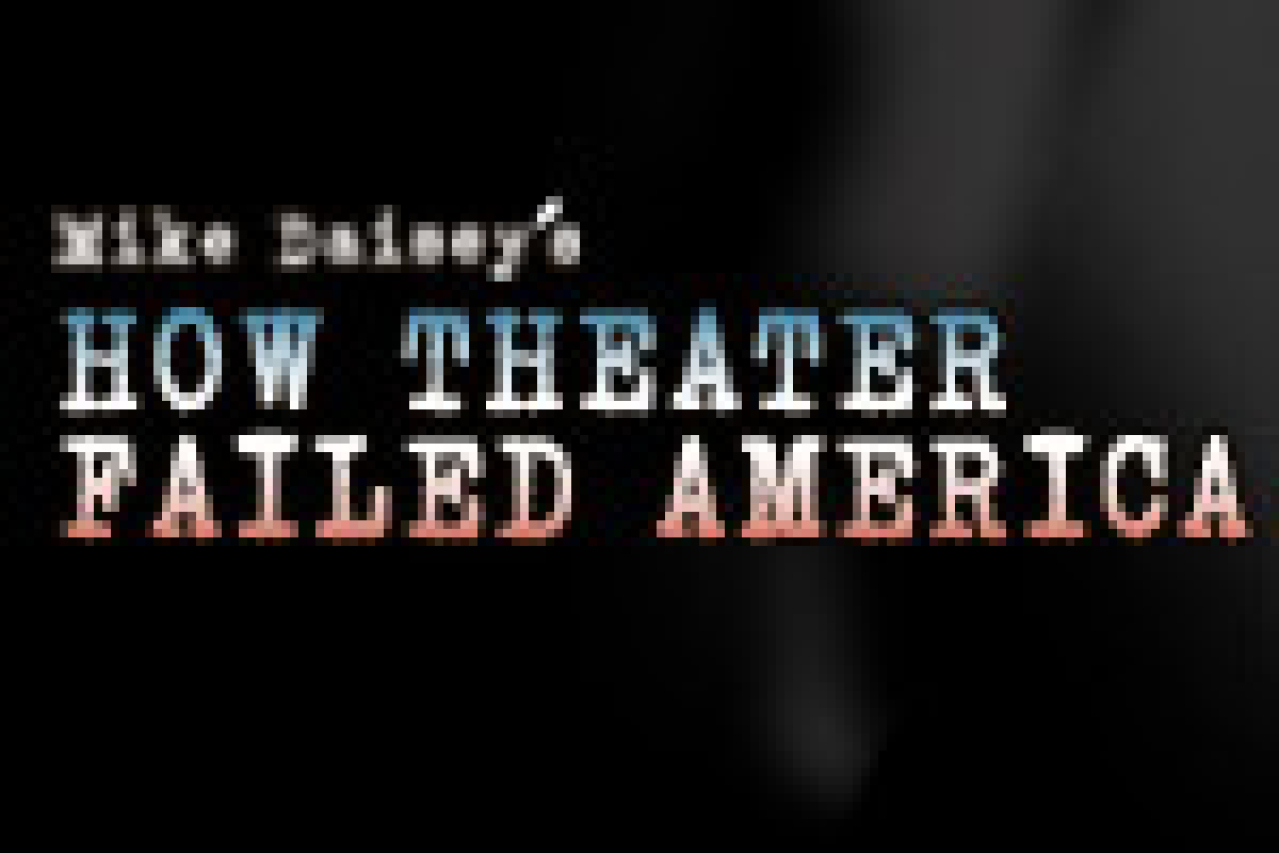How Theater Failed America

(© Ursa Waz)
Mike Daisey admits that How Theater Failed America, his new solo performance which has moved from Joe’s Pub to a limited engagement at the Barrow Street Theater, has a terrible title. In fact, he spends the first few minutes of the show hilariously deconstructing it, speculating on what an audience might hope for or expect. This proves to be the perfect set-up for the monologist’s engaging, witty, and impassioned critique of what’s wrong with the way theater is currently being done — and who is responsible.
Daisey mixes tales from his days of just starting out in the business with more recent anecdotes about his experiences, meetings, and friendships with artistic directors, literary managers, and other theater professionals. He has a gift for conjuring up vivid images, such as his description of an artistic director friend of his as a “hyperactive badger as written by David Mamet.” His cartoonishly expressive face also adds some levity to the proceedings.
However, the writer/performer isn’t afraid to delve into some really dark territory, including his attempted suicide and a rather disturbing action that he performed in front of a little girl during the run of a production of Jean Genet’s The Balcony. What’s even more remarkable is that he manages to make the audience understand the weight of everything he’s saying while transforming the material into some of the funniest stories I’ve ever heard.
During the course of the evening, he levels a wide range of criticisms and laments, such as the fact that an aging subscriber base is dying off without being replaced by younger audience members, theatrical institutions are more interested in perpetuating their existence instead of devoting resources to innovative programming, and artistic directors sometimes don’t even see any of an artist’s work before slotting it into their season. But these are not simplistic rants. Rather, they’re embedded within disarmingly clever narratives that utilize humor and deeply-felt emotions to provide a human dimension to what could be rather dry stuff.
Some of Daisey’s observations are obviously exaggerated for comic effect, such as his description of New York actors being freeze-dried, flown out to various regional houses, thawed, and put to work. But at the heart of all of his tales is an element of truth that makes clear not only his critical opinions, but also his love for the art.











